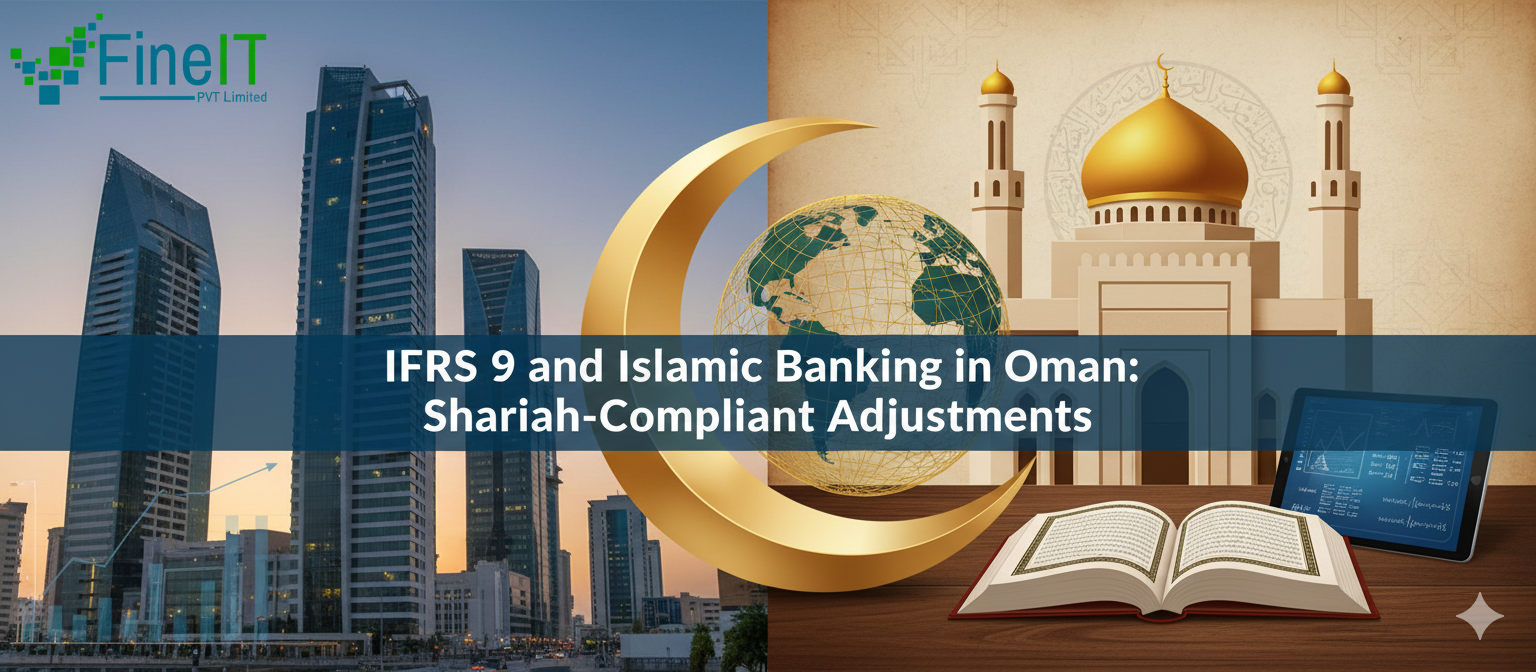The Sultanate of Oman’s financial sector has been undergoing a significant transformation, marked by the rapid growth of Islamic banking and the mandatory adoption of global accounting standards, most notably International Financial Reporting Standard 9 (IFRS 9): Financial Instruments.
This intersection of international regulatory requirements and Shariah principles has necessitated a strategic approach, particularly for Omani Islamic Banking Entities (IBEs) to ensure Shariah-Compliant Adjustments are seamlessly integrated into their financial reporting and risk management frameworks.
IFRS 9: A Paradigm Shift
IFRS 9, which replaced the old IAS 39, fundamentally altered three core areas of financial accounting:
- Classification and Measurement: Financial assets are now classified based on the entity’s business model for managing them and the contractual cash flow characteristics of the asset (the ‘Solely Payments of Principal and Interest’ or SPPI test).
- Impairment (Expected Credit Loss – ECL): The most substantial change is the shift from the backward-looking ‘incurred loss’ model to a forward-looking Expected Credit Loss (ECL) model. This requires banks to recognise potential losses much earlier, based on expected future defaults.
- Hedge Accounting: Alignment of accounting with risk management activities.
The Dual Compliance Challenge for Islamic Banking
Islamic banking operates under a unique ethical and legal framework where the charging and receiving of interest (Riba) is prohibited. Instead, profits are generated through asset-backed transactions based on concepts like risk-sharing and trade (e.g., Murabaha, Musharakah, Ijarah).
This fundamental difference creates a ‘dual compliance’ challenge for IBEs in Oman: satisfying both the Central Bank of Oman’s (CBO) mandate for IFRS 9 adherence and the non-negotiable requirements of the Shariah Supervisory Boards.
Key Areas Requiring Shariah-Compliant Adjustments:
| IFRS 9 Concept | Shariah Principle/Contract Type | The Compliance Challenge in Oman | Shariah-Compliant Adjustment |
| SPPI Test (Solely Payments of Principal and Interest) | Islamic financing contracts (e.g., Murabaha, Ijarah) are not debt instruments but sales or lease-based contracts, and returns are profit or rental payments, not interest. | Contracts must be assessed for their economic substance to ensure that the return on the financial asset is purely compensation for the time value of the principal amount, without prohibited elements like unearned profit. | IBEs must rigorously apply the “substance over form” principle, demonstrating that the contractual cash flows are economically equivalent to ‘basic lending arrangements,’ even though they are structured as trade-based agreements. |
| Expected Credit Loss (ECL) Model | ECL is a statistical, probability-based model that forecasts losses. Traditional Shariah-compliant risk mitigation may not align directly with this methodology. | ECL calculation needs to be adapted for unique Islamic products where risk and reward are often shared (Mudarabah, Musharakah), unlike conventional loans. | Customised ECL models must be developed that are sensitive to the risk-sharing nature of Islamic contracts and utilise data tailored to the IBE’s unique portfolio, while still meeting the rigor of IFRS 9’s three-stage approach. |
| Classification and Measurement | Certain Shariah contracts, like Mudarabah and Musharakah, are inherently risk-sharing and represent a partnership/investment, not a principal-and-return contract. | The classification of partnership assets (e.g., profit/loss sharing accounts) must reflect their true economic substance. | Equity-like or fair-value measurement may be more appropriate for instruments with genuine profit-and-loss sharing features, while many Murabaha or Ijarah contracts may still qualify for Amortised Cost if they pass the modified SPPI test. |
Conclusion
IFRS 9 in Oman has necessitated strategic Shariah-compliant adjustments for Islamic banks. These entities have successfully navigated the dual compliance challenge by rigorously applying the ‘substance over form’ principle for asset classification and developing bespoke Expected Credit Loss (ECL) models to reflect the risk-sharing nature of their products. Guided by the Central Bank of Oman and the standards of AAOIFI, this harmonization ensures global accounting transparency while upholding religious and ethical mandates. This convergence strengthens the sector’s governance, enhances financial stability, and secures Oman’s role as a leading player in the international Islamic finance arena.
Navigating the intersection of IFRS 9 and Islamic finance requires deep technical expertise and an understanding of local regulatory and Shariah frameworks. At Fineit, we specialize in helping Omani banks and financial institutions achieve seamless IFRS 9 implementation, develop customized ECL models, and ensure Shariah-compliant financial reporting that meets both CBO and AAOIFI requirements.
Get in touch with Fineit today to strengthen your compliance framework and future-proof your financial reporting systems.



